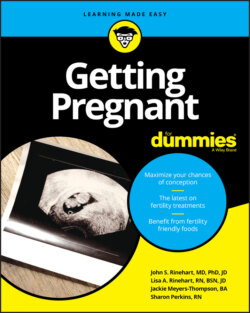Читать книгу Getting Pregnant For Dummies - Sharon Perkins - Страница 47
Bleeding too often — short cycles
ОглавлениеIf your cycles are very short — less than 25 days apart on a regular basis, you may be ovulating too soon. Since the period between ovulation and the start of your period should consistently be 14 days, if your periods are short, it usually (but not always — we discuss the alternative in this section) means that you have a short follicular phase, the time between your period and your ovulation.
A short follicular phase can mean that the egg is developing in the incorrect time frame. Short follicular phases can occur when your ovarian reserve, the number of eggs you still have in your ovaries, is starting to decrease. It occurs because there is an elevation of the FSH level in the previous cycle, which accelerates the development of the egg. So, a clinical pearl is that short cycles may raise red flags about reduced ovarian reserve. A woman who has traditionally had cycles ranging from 28–32 days and then notices that they have shortened to 26–27 days may be showing signs of reduced ovarian reserve. This is especially true if she is over the age of 35.
For quite some time, a lot of emphasis was placed on the second half of the cycle or the luteal phase. If this was shorter than ten days, a diagnosis of luteal phase defect was made and sometimes progesterone was used to try to correct for this. While there may be some controversy about this, recent understanding of how the cycle works has suggested that there may not be a luteal phase defect. The luteal phase is dependent upon the first half of the cycle, the follicular phase. The follicular phase is dependent upon the quality of the egg. So short luteal phases are a product of poor egg quality.
